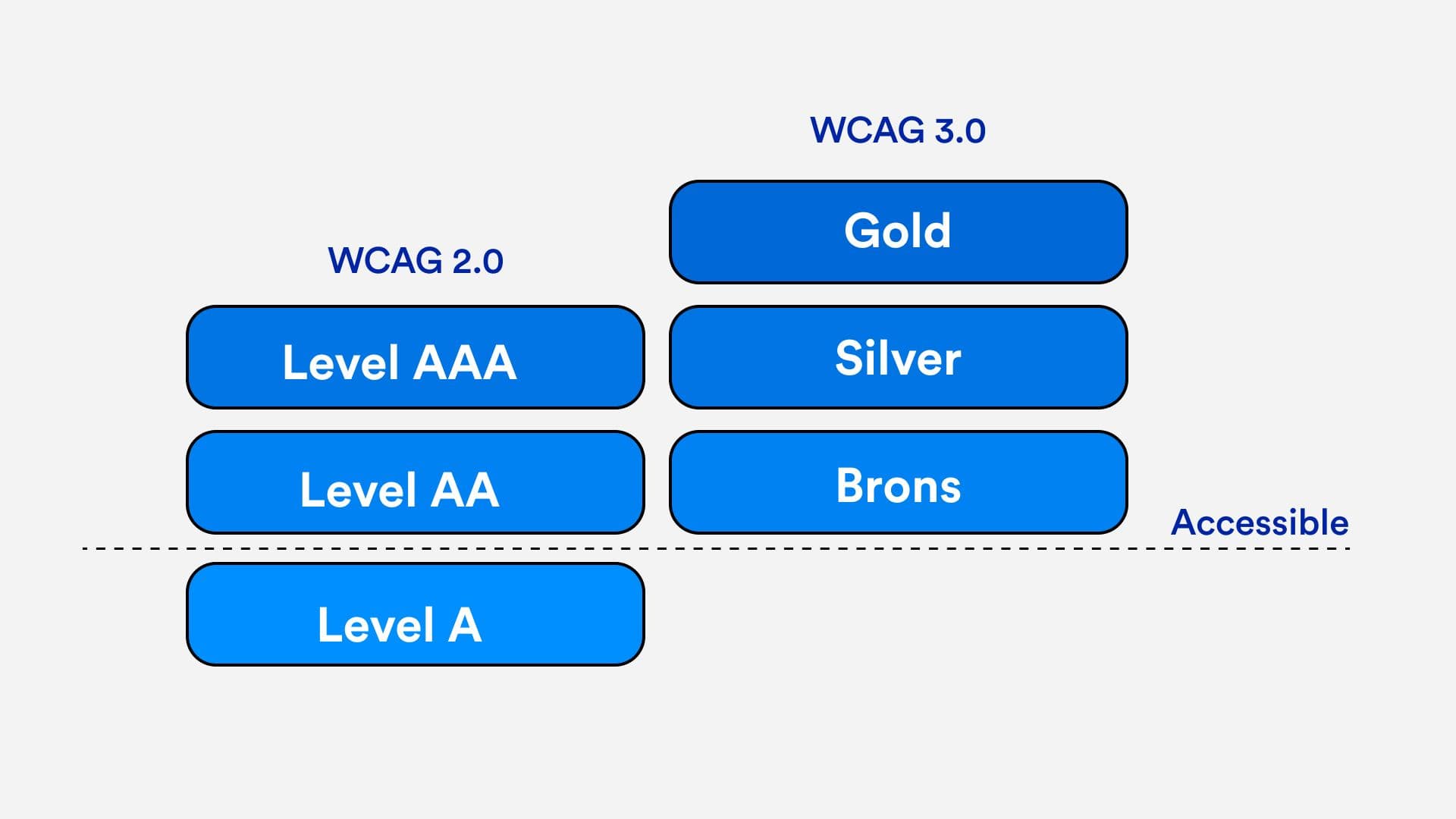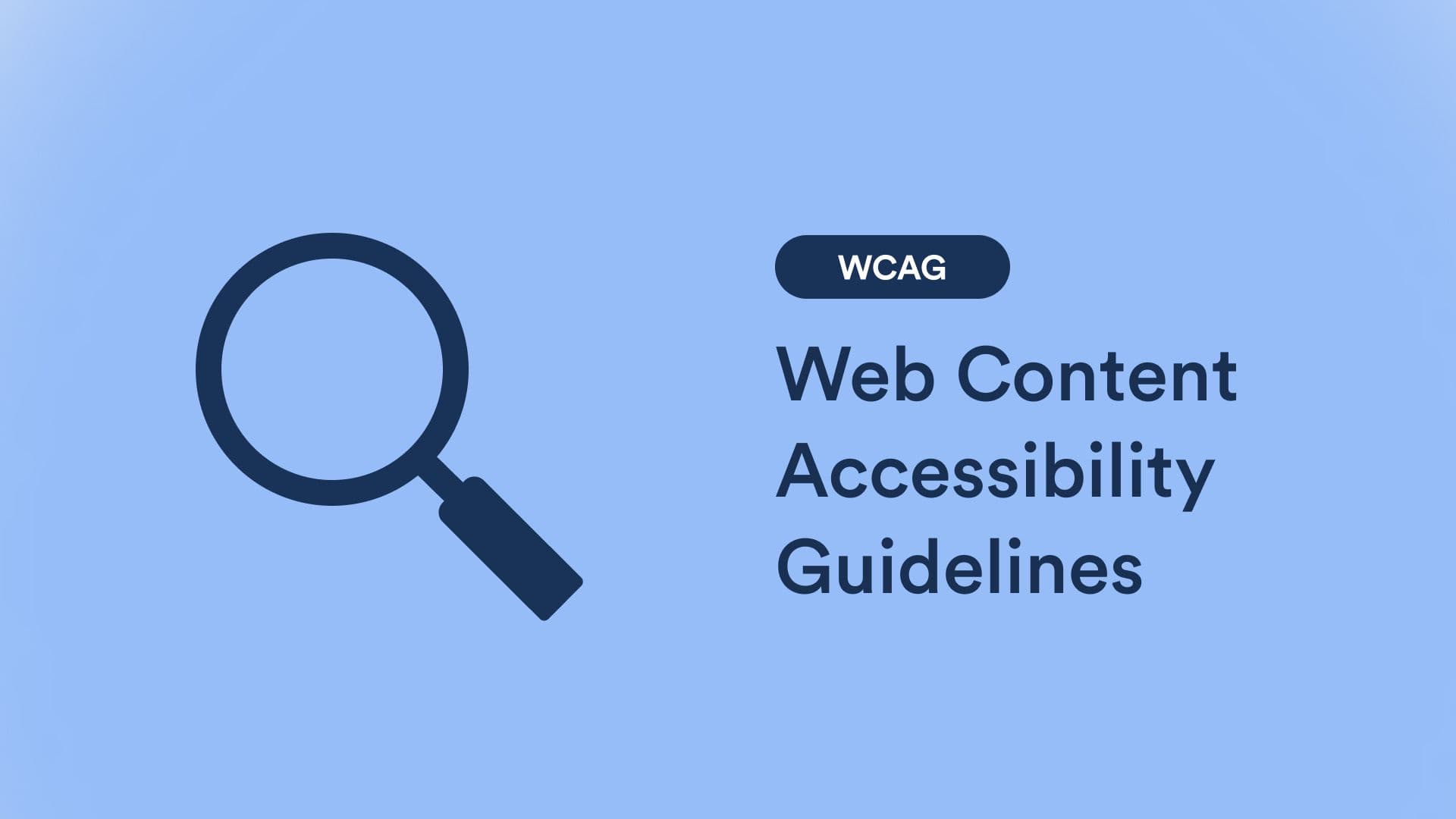WCAG 3: Advancing Web Accessibility
Areas
Web development ∙ SEO ∙ Web design

WCAG 3: Advancing Web Accessibility
The Web Content Accessibility Guidelines (WCAG) are entering a new phase with WCAG 3, currently in draft. This new standard is set to bring significant enhancements and broader coverage compared to its predecessors, WCAG 2. Here you can read further about WCAG and the current WCAG 2.2. So what are the key features and changes in WCAG 3?
Will WCAG 3.0 have Levels A, AA, and AAA?
No. The team is developing a new model for measuring conformance. While there will still be various criteria to meet, the traditional A, AA, and AAA levels will not be used.
Currently, the A, AA, or AAA levels are useful for determining if a site meets legal guidelines. However, they don't provide a nuanced assessment of a site's accessibility on a sliding scale.
Under WCAG 2.0, a site could meet all Level AA criteria and 24 out of 25 Level A criteria, yet still fail to meet any level officially. This forces the site to declare it doesn't meet even the minimum Level A standard, despite being very accessible for most people.
A more nuanced approach is needed to evaluate the 98% of sites that don't currently meet WCAG Level AA, as their accessibility can vary widely.
WCAG 3.0 introduces new levels:
Instead of the previous scoring method which uses A, AA and AAA, the new 3.0 will change its level of compliance to Bronze, Silver and Gold. From the recent WCAG 2.2, the AA rating would most likely translate into Bronze or Silver. Which would mean that the current A level would not be compliant with any level and would therefore not be considered as accessible at all.
WCAG 3.0 Rating/Scoring System
WCAG 3.0 introduces a rating/scoring system. Here’s how it works:
Element Testing: Elements of the site, such as images, are tested for compliance, like checking if all images have text alternatives.
Score Calculation: This testing gives a percentage of images that pass, resulting in a score.
Rating Assignment: The guidelines then map this score to a rating between 0 (Poor) and 4 (Excellent). For example, to earn a rating of 4 for text alternatives, at least 95% of images must pass. All 0-4 ratings are then averaged to get the final score. In addition to that, there is additional complexity:
Functional Categories: Each test is assigned to a "functional category," which relates to the types of users the content aims to assist. For example, one category is "Cognitive - Language & Literacy."
To achieve a Bronze rating under WCAG 3.0:
- A site must have an overall average rating of at least 3.5.
- It must also have an average of at least 3.5 in every functional category.
This ensures the site is broadly accessible to all users, preventing the exclusion of any specific group.
Silver and Gold Levels in WCAG 3.0
Silver and Gold levels in WCAG 3.0 introduce requirements beyond higher average ratings. They necessitate "holistic testing," which includes: Assistive technology testing, User-Centered design methods and user and expert usability testing.
Achieving these levels likely involves engaging a user group, rather than relying solely on specialist accessibility assessments.
Currently, details about holistic testing are vague. A comment in the guidelines notes, "Use of holistic tests to meet this level will be further explored in future drafts."
Similar to Level AAA in the current system, Silver and Gold levels will likely be pursued mainly by specialist websites, rather than the majority.
Purpose of the Change
The purpose behind WCAG 3 is to create a more comprehensive and user-friendly set of guidelines that better address the diverse needs of all users, including those with cognitive disabilities. This evolution reflects the rapid advancements in web technologies and aims to improve the overall user experience.
Development and Feedback
The WCAG 3 draft is developed by the W3C Accessibility Guidelines Working Group with input from various stakeholders. Feedback is actively sought to ensure the guidelines meet diverse accessibility needs.
For more details and updates, visit the WCAG 3 Introduction page.

Ludvig Risbecker
ludvig@bucketmedia.se








